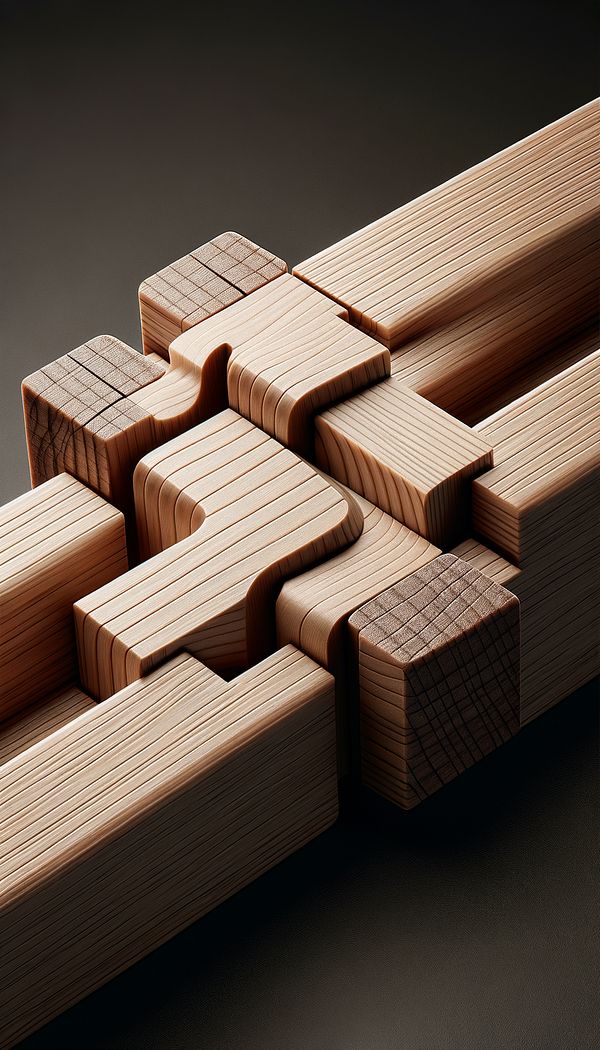What is Dovetail?
Dovetail is a type of interlocking joinery technique used in woodworking.
Description
Dovetail joinery is one of the most ancient and enduring methods of connecting pieces of wood. Not only does it provide remarkable strength and durability to the construction, but it also showcases a level of craftsmanship that is highly valued among woodworkers and designers alike. This technique involves cutting a series of interlocking pins and tails that fit together tightly without the need for nails or glue, though adhesives may be added for extra stability.
The beauty and precision of dovetail joints often elevate the aesthetic of the piece, making them a popular choice for high-quality furniture and cabinetry. There are various types of dovetail joints, including through, half-blind, and sliding dovetails, each serving different structural and aesthetic functions. The precision and expertise required to create these joints reflect the craftsmanship invested in the piece, making dovetail joinery a mark of quality in woodworking projects.
In interior design, dovetail joints are not only appreciated for their durability and strength but also for their visual appeal. The interlocking design can be left visible as a feature to display the meticulous work and attention to detail that has gone into the piece, adding depth and interest to the overall design.
Usage
Dovetail joints are most commonly found in high-quality furniture pieces, such as drawers, cabinets, and tables, where strength and durability are paramount. Additionally, they are used in architectural woodwork and custom-built in elements, such as shelving and other storage solutions, where the strength and aesthetic appeal of the joint contribute to the overall design of the space.
FAQs
-
What makes dovetail joints superior to other types of joinery?
Dovetail joints are highly esteemed for their unparalleled strength, durability, and resistance to being pulled apart. The interlocking nature of the pins and tails offers more surface area for adhesion, and the design itself locks the joint together even without adhesive. Their craftsmanship and aesthetic appeal also add value to furniture and woodworking projects.
-
Can dovetail joints be created by hand or with machinery?
Dovetail joints can be crafted both by hand using chisels and saws for maximum precision and traditional craftsmanship, or with machinery such as routers and dovetail jigs for increased speed and consistency in production. The method chosen often depends on the project requirements and the preference of the woodworker.
-
Are dovetail joints used in modern furniture?
Yes, dovetail joints continue to be used in modern furniture designs, especially in pieces where durability and high-quality craftsmanship are emphasized. They can be used both in traditional and contemporary pieces, presenting both strength and an appealing visual detail.
Practical Application
For best results, it's important to carefully measure and mark out your wood before cutting the dovetail joints. Precision is key, as even a slight misalignment can prevent the pins and tails from fitting together properly. When designing or selecting furniture with dovetail joints, consider leaving the joints exposed as a feature to highlight the craftsmanship and add a decorative element to the piece.
-
Furniture Types599 articles
-
Technical Terms38 articles
-
Fabrication & Craftsmanship133 articles
-
Construction & Building86 articles
-
MarbleizingMarbleizing is the process of applying paint or glaze to a surface to imitate the intricate patterns and colors of natural marble.
-
Tight SeatA tight seat is a style of upholstery where the seat cushion is built directly into the chair or sofa frame.
-
Glastonbury ChairThe Glastonbury Chair is a wooden folding chair of medieval English design.
-
DecoDeco, short for Art Deco, is a visual arts design style that emerged in the 1920s and 1930s.
-
BalusterA baluster is a small, vertical post that supports the handrail of a staircase, balcony, or railing.
